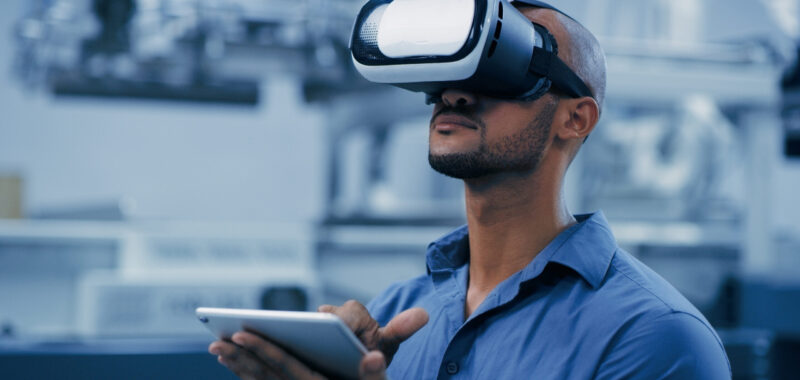Cathie Wood is betting big on Tesla and Meta Platforms as the AI revolution kicks into gear.
Ark Invest CEO Cathie Wood is one of the most outspoken personalities on Wall Street. Wood has garnered a large following thanks to her consistently bullish convictions around emerging technologies.
Right now, artificial intelligence (AI) is being explored for all sorts of futuristic use cases from self-driving cars to drug discovery. Wood recently took to social media platform X (formerly Twitter) and proclaimed that “AI is the most transformative technology in history.” A bold statement indeed but pretty much par for the course with Wood.
Below, I’ll explore two companies that have prominent positions in Wood’s exchange-traded funds (ETFs) and detail how each is disrupting AI.
1. Tesla
The first company I’ll be analyzing is electric vehicle (EV) manufacturer Tesla (TSLA 0.62%). Wood has long been a positive voice in Tesla’s corner, and the stock currently represents Ark’s sixth-largest holding.
At the moment, Tesla’s AI ambitions reside in two applications: autonomous driving and humanoid robotics.
Tesla’s autonomous-vehicle technology is called full self-driving (FSD). FSD is considered the nucleus of Tesla’s autonomous vehicle fleet, called Robotaxi.
Robotaxi presents many use cases for Tesla. First, should FSD become fully integrated into the company’s vehicles, the technology stands to be a major differentiator and selling point for the cars. Another way of looking at this is that FSD could broaden interest in Tesla cars and inspire more people to purchase them.
Moreover, Tesla could theoretically sell fleets of Robotaxis to service-oriented businesses such as ride-hailing platforms, rental car companies, or even delivery businesses. The ubiquitous nature that autonomous mobility presents for Tesla could fetch billions for the company over the next several years, according to Wood.
Outside of Robotaxi, Tesla is also developing a humanoid robot called Optimus. Elon Musk sees humanoid robotics as a complement to human workers inside of factories and warehouses. For Tesla, the Optimus bot could work alongside workers in its car factories, bringing an extra layer of efficiency and helping speed up production capabilities.
Wood seems to be aligned with the need for humanoid robotics, saying this technology is a $24 trillion opportunity. In the long run, Tesla could commercialize Optimus and sell the technology to other companies that are in need of labor assistance.
While it’s hard to know for certain how big of an opportunity self-driving cars or humanoid robots will be, Tesla is certainly leading the charge in two exciting pockets of the AI landscape.

Image source: Getty Images.
2. Meta Platforms
Meta Platforms (META 0.08%) has two core businesses: Family of Apps and Reality Labs. The Family of Apps business includes Meta’s social media platforms Facebook, Instagram, and WhatsApp, while Reality Labs focuses on the company’s metaverse ambitions to leverage virtual and augmented reality.
The Family of Apps operation makes money from advertising. According to Meta’s management, the company has implemented AI features into these social media platforms to drive increased engagement and target more advertising to users.
If Meta executes on this approach, both businesses and consumers should theoretically remain on the company’s apps for longer durations, creating a sticky ecosystem over time. As such, the company could be on the verge of unlocking a new growth wave for its already-enormous advertising segment.
On the Reality Labs side of the house, Meta has a couple of interesting hardware products that are yet to reach critical scale. The company’s virtual reality gaming headset, Meta Quest, is an important pillar supporting the company’s metaverse initiative.
Additionally, Meta’s Ray-Ban smart glasses and Orion spectacles could wind up being major catalysts as the company makes inroads in augmented reality. I’ll admit that Internet of Things (IoT) devices such as smart wearables are hit or miss. While the Apple Watch has been praised by consumers, the company’s Vision Pro V/R headset was a major flop.
I do see things a bit differently with Meta, though. The company has invested significantly in developing its own AI language model, called Llama. As Llama becomes more sophisticated, Meta has a unique ability to bridge the gap between its hardware devices and social media internet presence.
For example, a person could snap pictures on Meta’s sunglasses while simultaneously posting this content on Instagram. In turn, Meta has a chance to better understand the content this user enjoys and make recommendations, including other products they may be interested in purchasing as well as people on the Meta Family of Apps that they may want to connect with.
While I suspect it will take time for Meta to get its AI machine fully up and running, I am personally intrigued by the company’s potential and think its advertising and Reality Labs business could witness much further growth in the future.
Randi Zuckerberg, a former director of market development and spokeswoman for Facebook and sister to Meta Platforms CEO Mark Zuckerberg, is a member of The Motley Fool’s board of directors. Adam Spatacco has positions in Meta Platforms and Tesla. The Motley Fool has positions in and recommends Meta Platforms and Tesla. The Motley Fool has a disclosure policy.

